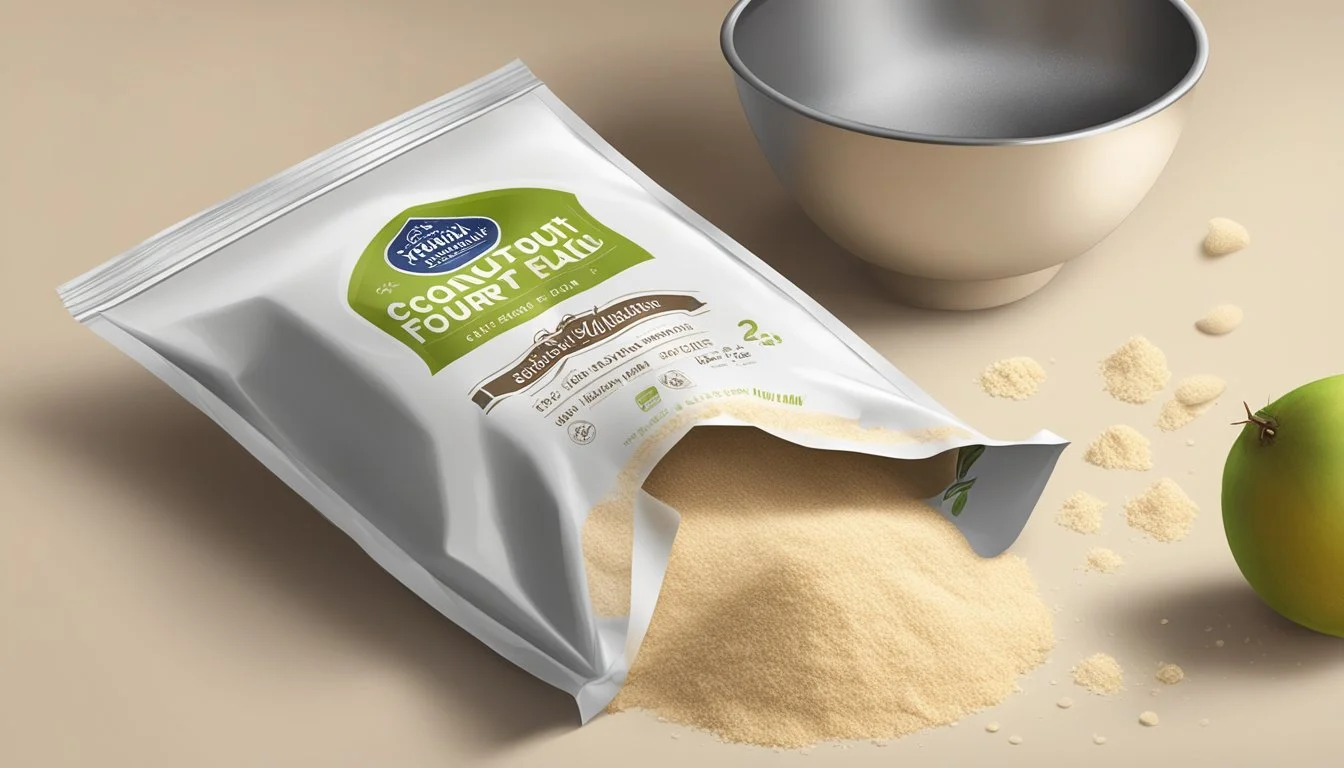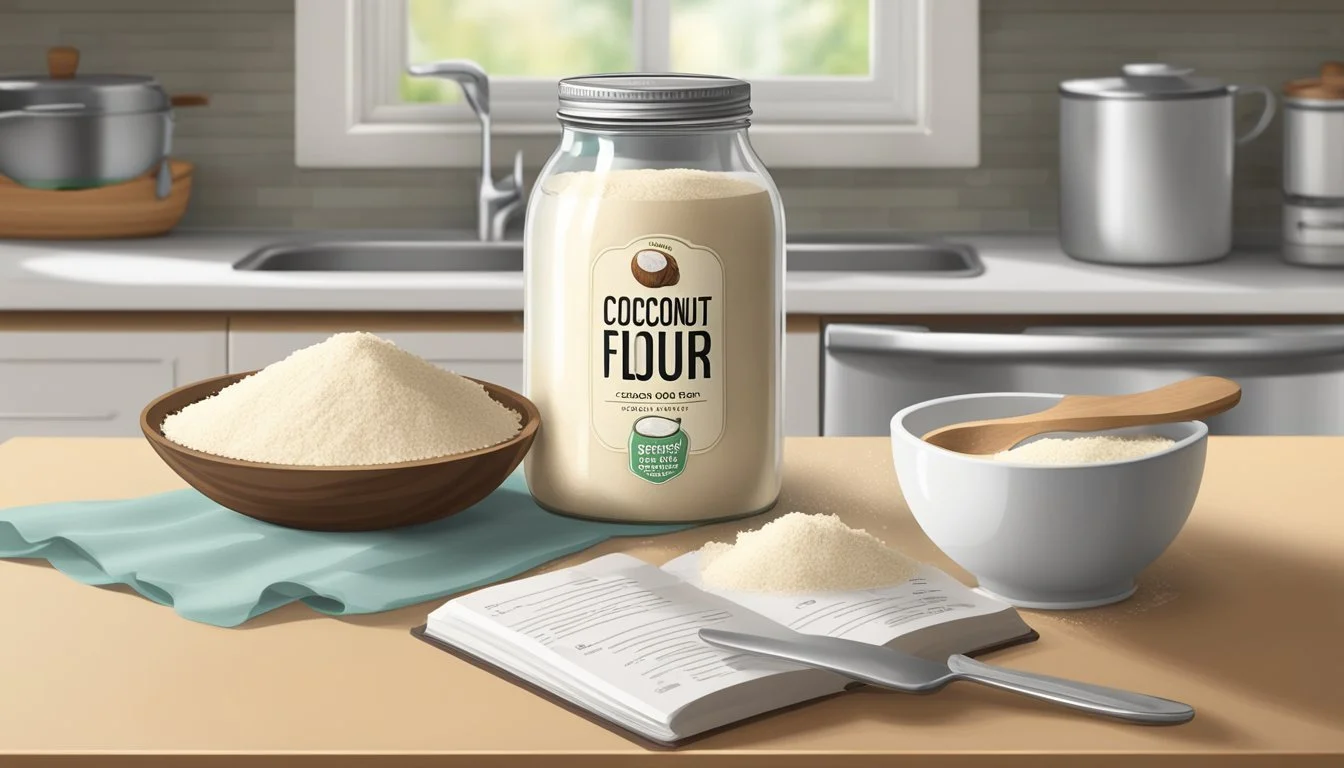Does Coconut Flour Go Bad?
Understanding Shelf Life and Storage Tips
Coconut flour is a popular alternative to traditional grain-based flours, known for its high fiber content, protein, and healthy fats. It is made from the dried, ground flesh of coconuts and has become a staple in many gluten-free and low-carbohydrate diets. Like all food products, coconut flour can go bad, but its shelf life can be quite generous when stored properly.
Under typical pantry conditions, unopened coconut flour can last several months beyond its printed best-by date. Once opened, maintaining the freshness of coconut flour depends on how it is stored—airtight containers are a must to prevent moisture and pests from compromising quality. Refrigeration can further extend its shelf life, potentially keeping coconut flour in good condition for up to a year past the best before the date, while freezing may keep it usable for even longer.
Despite the resilience of coconut flour, it is not impervious to spoilage. Signs of rancidity, such as an off-putting smell, altered taste, or clumpiness in the flour, indicate that it has gone bad and should not be used. Consumers should always rely on both sensory clues and best-by dates to assess the quality of their coconut flour to ensure their recipes turn out both tasty and safe.
Understanding Coconut Flour
Coconut flour emerges as a sought-after ingredient in the health-centric culinary world, noted for its nutrient-dense composition and its compatibility with various dietary considerations such as gluten-free and keto diets.
Composition and Properties
Coconut flour is a soft, natural flour made from dried coconut meat. After the meat is pressed for virgin coconut oil, the remaining defatted coconut meat is then ground into flour. This flour is characterized by its high fiber content, significant protein levels, and a low digestible carbohydrate count. Rich in healthy fats, this flour aligns well with keto and paleo diets.
Fiber: Primarily composed of insoluble fiber which aids in digestion.
Protein: Contains more protein than traditional grain-based flours.
Fat Content: Despite being low in fat compared to coconut meat, it retains a proportion of healthy fats.
Health Benefits
The nutritional profile of coconut flour offers various health advantages. Being gluten-free, it is an excellent alternative for individuals with celiac disease or gluten intolerance. Its high fiber content can help to stabilize blood sugar levels, making it beneficial for those monitoring their glycemic index.
Gluten-Free: An ideal flour substitute for those avoiding gluten.
Fiber: Aids in maintaining digestive health and can contribute to satiety.
Healthy Fats: The fats present can help support the body's energy needs.
Culinary Uses
Coconut flour has a distinctive taste and texture, making it popular for baked goods such as pancakes, cakes, and other desserts. Its ability to absorb moisture requires adjustments in recipes, often needing more liquid than other flours.
Baked Goods: Provides a tender crumb and rich texture to recipes.
Versatility: Suitable for sweet and savory dishes alike.
Homemade Options: Can be made at home by grinding dried coconut meat.
This flour serves as a versatile component in the kitchen and promotes a healthful balance, suiting a wide array of dietary lifestyles.
Shelf Life and Storage
The longevity of coconut flour is influenced by several factors, with storage conditions playing a pivotal role in preserving its quality. To ensure maximum freshness, coconut flour requires specific storage techniques that mitigate deterioration.
Factors Affecting Shelf Life
The shelf life of coconut flour is susceptible to various environmental elements:
Heat: Excessive temperatures accelerate spoilage.
Light: Direct sunlight can degrade quality.
Air: Exposure to air can lead to oxidative damage.
Moisture: Humidity facilitates the growth of mold and bacteria.
To maintain the integrity of coconut flour, it's crucial to manage these factors diligently.
Optimal Storage Conditions
Maintaining the quality of coconut flour hinges on the following conditions:
Temperature: Store in a cool, dry place away from sources of heat.
Light: Keep away from direct sunlight to prevent degradation.
Air: Use airtight containers to minimize exposure to air and prevent oxidation.
Moisture: Ensure the storage area is free from moisture to stave off spoilage.
By controlling these variables, the shelf life of coconut flour can be extended.
Proper Storage Techniques
To preserve its freshness and extend shelf life, coconut flour should be stored properly:
Pantry: Keep it in a cool, dry place for up to several months beyond the best-by date.
Refrigeration: Storing in the fridge in an airtight container can extend shelf life up to a year past the best-by date.
Freezing: Freeze coconut flour in an airtight, vacuum-sealed, or plastic container to retain quality for up to two years after the best-by date.
Implement these storage techniques to maximize the usability of coconut flour.
Identifying Spoilage
Coconut flour can exhibit several telling signs when it starts to spoil, affecting everything from its appearance to its smell and taste. Proper assessment helps ensure its usability and safety for consumption.
Signs of Deterioration
Odor:
Fresh Coconut Flour: Has a sweet, nutty aroma.
Rancid Coconut Flour: Emits an unpleasant, sharp, or sour odor.
Texture and Appearance:
Fresh: Characteristically soft, fluffy, and devoid of clumps.
Spoiled:
May become dense or lumpy due to moisture absorption.
Can present discoloration or mildew spots.
Might contain pantry bugs, insects, or pests.
Storage Duration:
Unopened Package: Normally safe to use by the expiration date if stored correctly.
Opened: Oxidation and rancidity accelerate after opening.
Assessing Usability
Appearance & Consistency Check:
Sift through the flour to identify any clumps or inconsistencies.
Odor Examination:
Conduct a smell test to detect any unpleasant odors, indicative of spoilage.
Storage Considerations:
Assess if the flour has been kept away from direct sunlight or heat sources, as these can contribute to spoilage.
By observing these factors, one can effectively determine whether coconut flour is still suitable for use or requires disposal. Proper storage in airtight containers can extend the shelf life and maintain its freshness and absorbency.
Practical Tips
To maintain the quality of coconut flour, one needs to focus on prevention of contamination, enhancement of shelf life, and consideration of alternative flour options for diverse dietary needs.
Preventing Contamination
Coconut flour's quality can be compromised by exposure to air and moisture. To avoid this, one should always store the flour in an airtight container. By doing so, it limits contact with external elements that can lead to spoilage. When using coconut flour, one should ensure their utensils are dry and clean to prevent any moisture from seeping into the flour.
Do: Use dry spoons and keep the bag or container sealed.
Do Not: Put back unused flour into the original packet if it’s been potentially contaminated.
Extending Shelf Life
The natural oils and fats in coconut flour can cause it to become rancid over time. Proper storage techniques are pivotal to extend its shelf life. Keeping the flour in a cool place, away from direct sunlight and sources of heat can make a significant difference. Furthermore, refrigerating or even freezing the flour in an airtight container or bag stabilizes the oils and fats, preventing them from going bad.
Refrigerator: Extends shelf life by 6-12 months
Freezer: Extends shelf life up to two years
Alternative Flour Options
Individuals adhering to gluten-free, keto, or paleo diets often seek alternatives like coconut flour for its high fiber and protein content. When coconut flour is not an option or suitability is in question, almond flour is a versatile substitute in baking recipes. It also provides a gluten-free solution with similar nutritional benefits, such as the ability to help stabilize blood sugars.
Usage: Replace coconut flour with almond flour as needed.
Consideration: Almond flour does not absorb as much moisture as coconut flour, so adjustments in recipes may be necessary.



